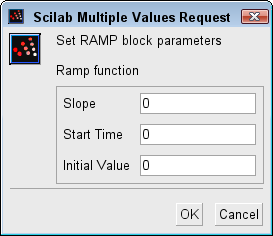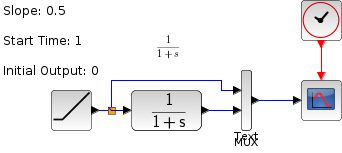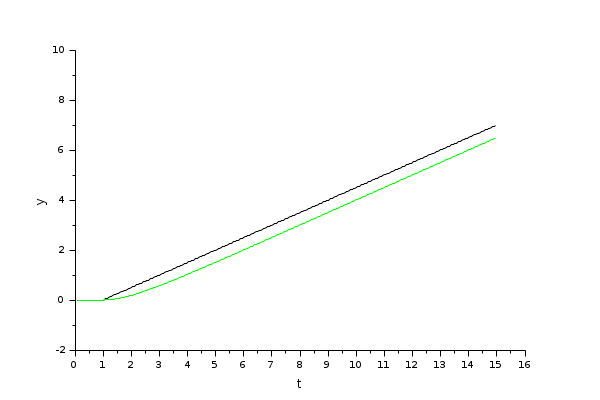RAMP
Ramp
Block Screenshot

Contents
Description
The Ramp block generates a signal that starts at a specified Start Time and Initial Value and increases by a specified rate (Slope parameter). The output signal is defined by the following equation:

where
t0 is the
Start Time,
s0 the
Initial Value and
k the
Slope.
Data types
Output: scalar double.
Parameters

Slope
Scalar. The rate of change of the generated signal.
Properties : Type 'vec' of size 1.
Start Time
Scalar. The time at which the signal begins to increase.
Properties : Type 'vec' of size 1.
Initial Value
Scalar. The initial value of the signal.
Properties : Type 'vec' of size 1.
Default properties
always active: yes
direct-feedthrough: no
zero-crossing: yes
mode: yes
regular outputs:
- port 1 : size [1,1] / type 1
number/sizes of activation inputs: 0
number/sizes of activation outputs: 0
continuous-time state: no
discrete-time state: no
object discrete-time state: no
name of computational function: ramp
Example
This diagram shows the use of RAMP block to obtain the response to a ramp signal of a first order's system defined by a transfer function.


Interfacing function
SCI/modules/scicos_blocks/macros/Sources/RAMP.sci
Computational function
SCI/modules/scicos_blocks/src/c/ramp.c (Type 4)
See also
- STEP_FUNCTION — Step Function
- CURV_f — Curve
- Sigbuilder — Signal creator/generator
| Report an issue | ||
| << PULSE_SC | Sources palette | RAND_m >> |